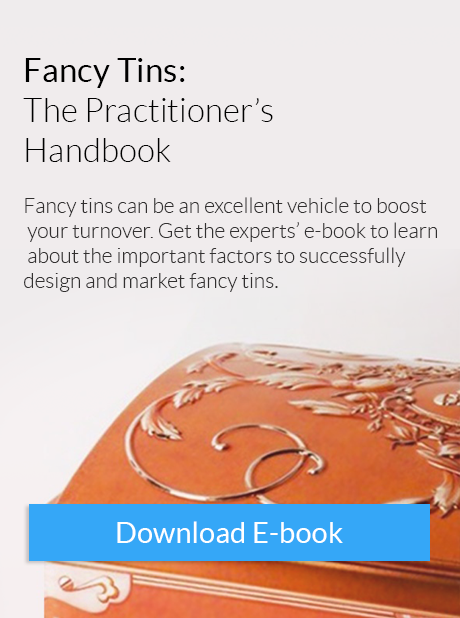Consumers base buying decisions on what their senses, memories and emotions tell them. That's why packaging design should provide multisensory stimuli congruent with brand themes that connect with followers. Here are ways designers can apply knowledge about multisensory processes to packaging designs.
Appealing to the Senses
The underlying concept designers should remember about how packaging relates to multisensory perception is that consumer decisions are driven by a combination of sensory triggers. The visual aspect of a package is perhaps most important since it contains the text and imagery that showcases and confirms brand attributes. Other subtle sensory input includes how a package feels to the skin, its weight and what it sounds like when you shake it. Perceptions of taste and smell apply to almost all foods.
People associate different sensory perceptions with experiences over time. If they have an allergic reaction to a certain food they may associate the item's aroma with a negative sensation. When someone eats something that makes them feel ill, they may associate the awful feeling with the specific brand from then on.
Why Visuals Have the Most Impact
Visual sensory input usually has the most powerful impact on consumer choice because the mind naturally processes a lot of information at once through sight. People tend to believe what they see with their own eyes more than what they've heard someone else talk about. A visual reference is often more memorable than experiences of hearing or touching something.
One of the most influential variables in designing graphics is color because everyone generally identifies with specific colors is common ways. Blue and green, for example, are universally regarded as earthy colors. Red is commonly linked with vibrance, while black and white support a wide mix of color combinations.
Studies show that certain colors and levels of brightness make objects feel heavier than they are. People can also be led to believe that a red object is warmer than a blue one. That means if you want the package to feel cooler for whatever reason, blue will work better than red.
Although visual aspects should be prioritized when using multisensory data to shape packaging design, you should still consider the influences of other senses. Temperature, for example, affects touch and is important when conducting taste tests. Measuring how people respond to food and its packaging can be done with 1-10 rating systems, which can be applied to each of the five senses.
Ambient Fragrances
The concept of ambient fragrance in marketing is used to project a scent in a space a person occupies to the level of affecting others. Food and cosmetic products are often packaged to preserve an aroma so that when the container is opened the scent immediately associates with the product. Remember that scent is linked with memory, which plays a tremendous role in shaping product impressions.
Experimenting with scents is a way to improve consumer perception of a product. The scent should correspond with people's expectations, such as a pleasant aroma to go with a beautiful product. A scent marketing study by Martin Lindstrom found that as much as 75 percent of human emotions associated with memory are triggered by aroma. People simply have a strong memory for describing smell accurately. The study further found that brand impact was more significant when more than one sense is engaged with the message. Engaging with three or more senses can exponentially elevate brand awareness.
Crossmodal Congruency
Designers should take a crossmodal congruency approach to packaging, meaning pay attention to the most relevant multisensory factors for a given product. A congruent approach implies different senses work together to generate unique perceptions of objects that consumers expect. Since many people associate smooth texture with femininity and rough texture with masculinity, these perceptions can be applied to packaging design.
When a warm/cool fragrance is paired with a warm/cool feel in consumer tests for gel packs, results shows people often have a favourablee opinion of the product's therapeutic value for pain relief. The concept of using crossmodal incongruency in packaging, which involves surprising consumers with associations they don't expect, can work for brands that convey excitement. Meanwhile, congruent multisensory packaging tends to work with brands that emphasize sincerity.
Conclusion
Packaging designers are paying more attention to the relationship between multisensory perception and consumer purchasing behavior. Understanding the differences between congruent and incongruent multisensory stimuli is crucial for developing appropriate packaging strategies for specific products. Appealing to at least three senses increases the odds of the product and its packaging being memorable.
References
[1] "Haptic Aspects of Multisensory Packaging Design (2019)" , by Charles Spence, Crossmodal Research Laboratory, Department of Experimental Psychology University of Oxford
[2] "Multisensory Packaging Design (2017 - today)" , by Charles Spence
[3] "From Disgust to Desire: How Products Elicit Our Emotions (2004)" , by Pieter M. A. Desmet, in Design and Emotions, edited by Dena McDonagh et al.
[4] "Luxury branding: the industry, trends and future conceptualisations (2015)" , by Yuri Seo and Margo Buchanan-Oliver
[5] "Food packaging: The medium is the message (2010)" , by Corinna Hawkes
[6] "Multisensory design: Reaching out to touch the consumer (2011)", by Charles Spence and Alberto Gallace








